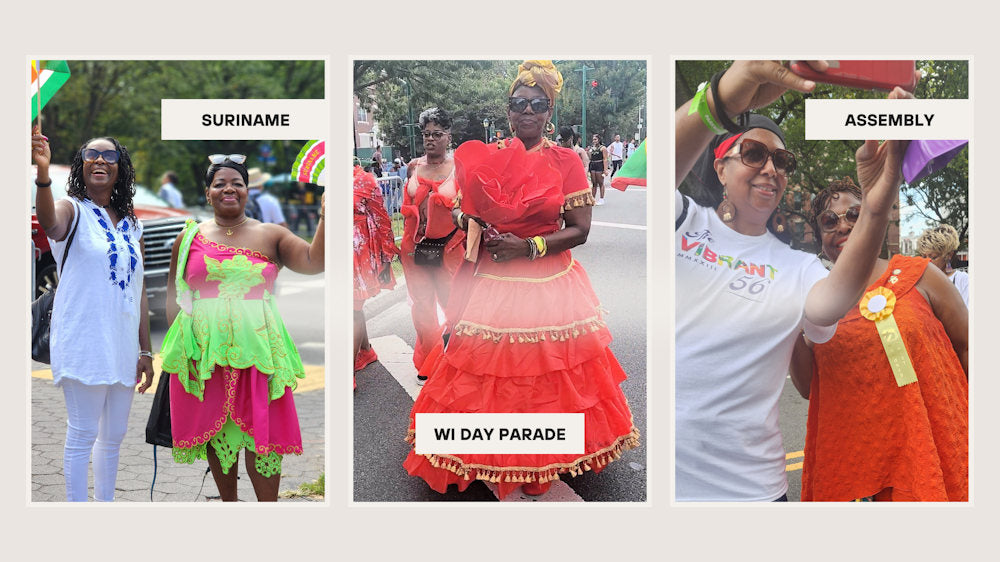The West Indian American Day Parade, an iconic event in Brooklyn, NY, is more than just a parade; it's a celebration of culture, unity, and the rich tapestry of Caribbean heritage.
This year, I had the privilege of attending this lively extravaganza, joined by my childhood friend Moreen and invited by Assembly member Stefani Zinerman. As we made our way to Eastern Parkway and Rochester, we proudly waved the Suriname flag, representing our Caribbean roots.
The journey to the parade was an adventure in itself. A 30-minute walk from my place took us through a vibrant transformation. With every step, the music grew louder, the aroma of delicious Caribbean cuisine filled the air, and the streets came alive with a riot of colors and outfits that celebrated the diverse Caribbean cultures.
Before reuniting with Team Zinerman, we encountered familiar faces and impromptu parties near the sound trucks lining up for the parade. The energy was contagious, and we couldn't help but join in the festivities.
Upon meeting up with our assembly member, we were warmly welcomed with T-shirts and cowbells, becoming an official part of the 56th District's representation. We exchanged greetings, captured memorable photos and videos, and felt a sense of community that transcended cultural boundaries.
The parade was a sensory delight with music and mouthwatering food around every corner. Elected officials, including Mayor Adams, Jumaane Williams, Yvette Clark, and even Media person Al Sharpton, graced the occasion, highlighting its significance in the city's cultural landscape.
Our decision to proudly display the Suriname flag turned out to be a fantastic idea. The flag caught the attention of fellow Surinamese individuals who greeted us as if we were long-lost friends. It was heartwarming to find our small Surinamese community represented amidst the larger Caribbean festivities. We later encountered more Surinamese participants, adding to the sense of camaraderie and shared heritage.



Suriname's unique carnival, known as "Avondvierdaagse," differs from the typical Caribbean carnivals. It involves four days of long-distance walking combined with cultural and ethnic expressions. The event attracts around 6,000 participants annually and showcases the diversity of Suriname's culture and traditions.
The West Indian American Day Parade is an absolute blast. While I've enjoyed it as a spectator before, participating in the parade brought a new level of appreciation. I wholeheartedly recommend that even if you've attended as a spectator, you should experience walking in the parade at least once. The energy, unity, and cultural richness are truly unforgettable.
The parade, which stretched from Eastern Parkway to Grand Army Plaza, was a true sensory delight. People lined the sidewalks, completely mesmerized by the amazing performances of steelpan and calypso bands, all decked out in these fantastic, elaborate costumes. What's really impressive about this parade, though, is its economic impact. It's not just a fun event; it's a big deal for the local economy, generating a whopping $300 million in revenue. In fact, it's the biggest money-making parade in all of North America, and Assembly member Brian Cunningham made sure to highlight that fact.
In conclusion, the West Indian American Day Parade and J'Ouvert are not just events; they are vibrant expressions of Caribbean culture, unity, and celebration. They bring together people from diverse backgrounds to revel in the beauty of Caribbean heritage. As an advocate for natural hair and equal rights, I appreciate how such cultural celebrations contribute to embracing one's unique identity and breaking stereotypes. The West Indian American Day Parade is a testament to the power of cultural pride and unity, and I look forward to celebrating it for years to come.








